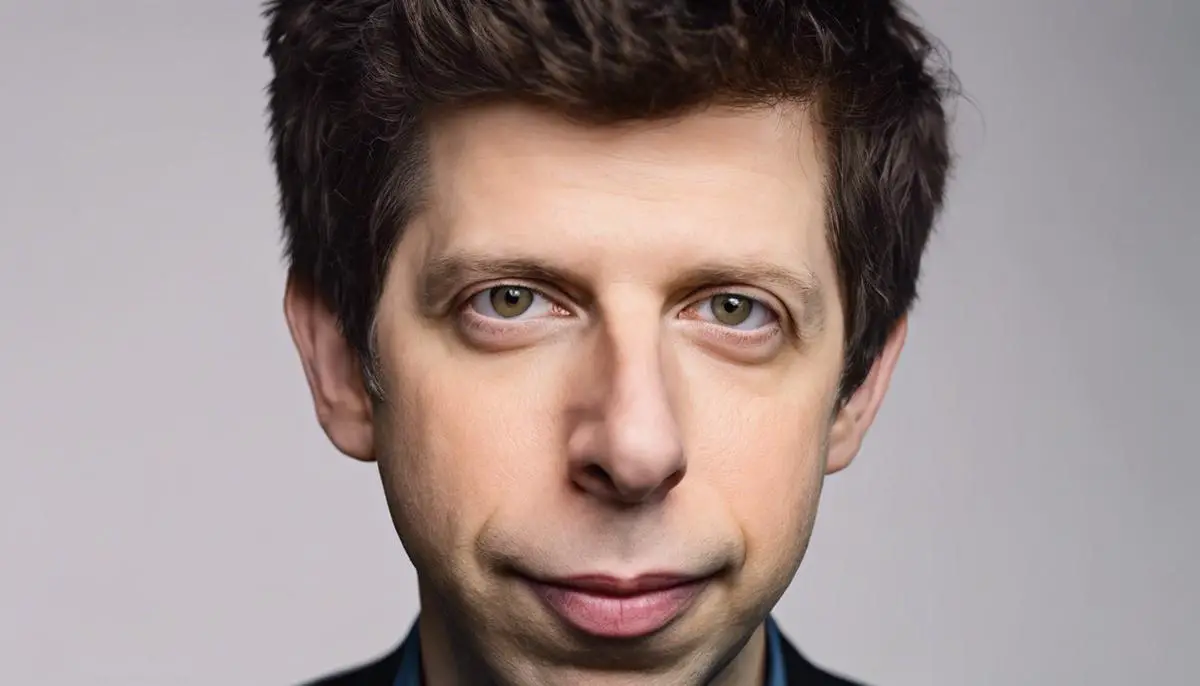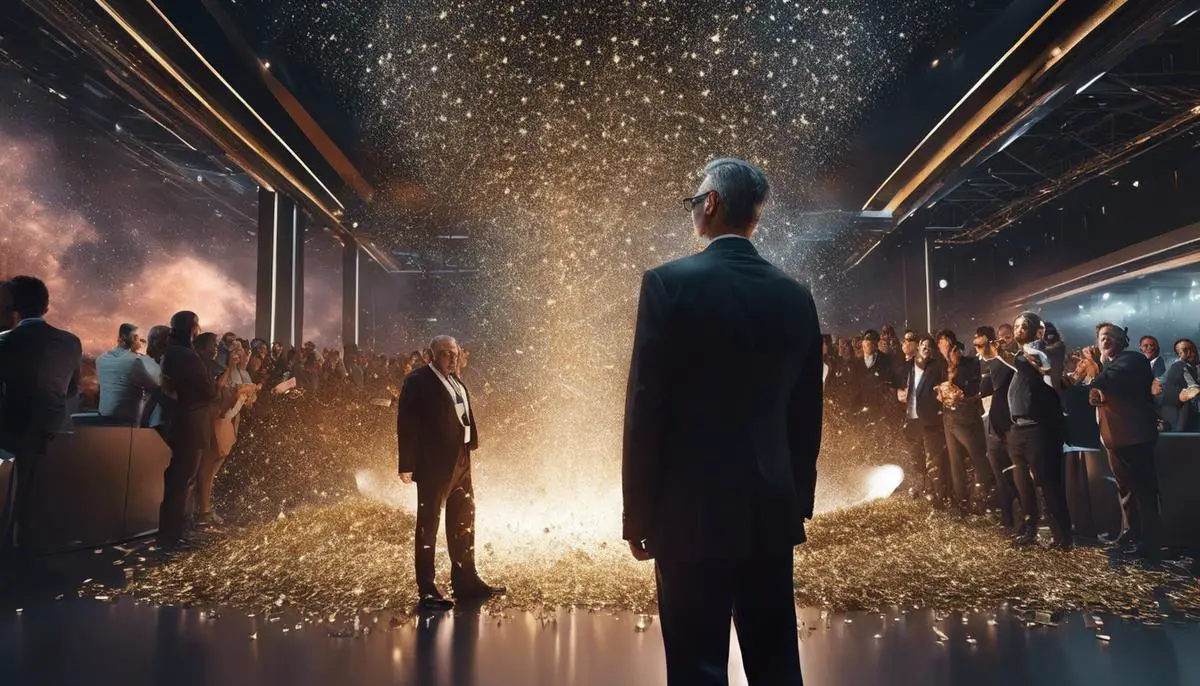In the world of artificial intelligence and its game-changing enterprises, there exist captivating narratives of vision, innovation, leadership, and occasional upheavals. One such unfolding drama that recently sought global attention involves OpenAI, a leading light of AI research, and its now-ousted CEO, Sam Altman. A man integral in shaping AI’s evolution, Altman’s journey, his tumultuous exit from OpenAI, and the reverberations sent across the AI landscape unfold an intriguing tale that necessitates a thorough exploration. Much like diving headfirst into an engaging hobby, we will delve into the story’s fabric, beginning with Altman’s path to becoming OpenAI’s CEO, followed by a deep-dive into the circumstances surrounding his dismissal, and culminating in an analysis of its ripple effect on the company and the broader AI industry.
Background Information on Sam Altman and OpenAI
“Unweaving the Saga: Sam Altman and OpenAI”
Are fellow tech enthusiasts familiar with the prodigious Sam Altman and the state-of-the-art initiative OpenAI? It’s a tale of resiliency, innovation, and ongoing learning that resonates with every hobbyist who’s fascinated by technology and artificial intelligence.
We can trace Sam Altman’s relationship with artificial intelligence (AI) to his period as a partner at Y Combinator, a well-recognized startup accelerator. Here’s where the backstory gets intriguing. In December 2015, OpenAI, an AI research lab, made its mark on the world scene. Altman, being quick to recognize the potential, joined hands with Elon Musk and other co-founders to launch this nonprofit enterprise. Boasting luminaries like Ilya Sutskever and Greg Brockman, the organization pledged to promote and develop friendly AI for the benefit of humanity.
OpenAI started as a purely non-profit entity, with the intent to focus on the altruistic aspects of AI. Altman’s role initially was as a co-chair, sharing his desk with none other than SpaceX CEO Elon Musk. Together, they navigated turbulent waters, making decisions to shape the organization’s budding structure and initiatives.
The open-source ethos was a strong undercurrent in OpenAI’s operations. Loyalists would remember the epoch-making GPT (Generative Pretrained Transformer) project that showcased the power of machine learning. This period saw the incredible growth of OpenAI under the stewardship of Altman and Musk.
Three years into the journey, this tech odyssey witnessed a significant milestone. In 2019, Altman decided to step into the role of CEO and guided OpenAI into a new era. He steered the lab towards a more capitalistic model, citing the need to generate substantial resources to fulfill its mission.
Now, it’s critical to mention this metamorphosis was not without controversy. Critics raised eyebrows when OpenAI transitioned into a ‘capped-profit’ model. This shift allowed external investment and potential future returns for investors. But Altman stood firm in his resolution, emphasizing that the blocking and tackling necessary to ensure OpenAI’s mission demanded such a decision.
While this visionary navigated the tumultuous waves, one distinct milestone stands out – the creation of GPT-3. Introduced under Altman’s leadership, it was a massive leap in AI language model, featuring 175 billion machine learning parameters. While still in the domain of research and development, OpenAI started licensing the usage of GPT-3, reflecting Altman’s strategic shift from pure research to market application.
As of now, the spotlight is on Altman’s vision of democratizing AI. His leadership keeps OpenAI at the sharp edge of innovation while ensuring it remains committed to its original promise – the focus remains on a human-centric AI.
Yes, the story of Sam Altman and OpenAI is an intricate dance of technology and entrepreneurship. It’s a continuous testament to the power and potential of AI, with plenty of lessons for fellow tech-enthusiasts.

Details about the Firing
The sudden and enigmatic dismissal of Sam Altman by the OpenAI board is etched in the annals of AI history as a testament of the delicate interplay between individual vision, board direction, and corporate commitment to oversight in the world of technology. As hobbyists and enthusiasts, understanding the dynamics of this unfolding is crucial in grasping the trajectory of future developments in AI and the broader implications of corporate governance in tech organizations.
Differing Perspectives or Power Play?
Firstly, the intricacy that shines brightly is the conjecture of divergence in perspectives. Despite Altman’s strong inclination towards democratizing AI and maintaining a human-centric approach, the board’s decision suggests a possible philosophical divergence that led to his dismissal. Discussions garnering intense attention suggest that OpenAI’s board perhaps did not align with Altman’s vision entirely. While the exact details remain unclear, this deviation serves as a reminder that a collective organizational vision can sometimes supersede a powerful individual’s view in key decision-making.
The Tactical Behind the Monolithic
Another pivotal intricacy lies in the financial rearrangement that transpired behind the scenes. Modifications in the governance model led to investments becoming debts, directing control away from Altman, who was then at the helm of affairs. Moreover, the organizational shift to pro-profit from the initial capped-profit model under Altman’s stewardship indicated harbinger signs of disputes. The pivotal role financial dynamics play in determining the management structure of significant tech organizations cannot be underplayed here.
Distilling the Effects
An overlooked intricacy is that Altman’s ousting might have profound impacts on future AI projects within OpenAI. Under Altman’s leadership, GPT-3 – a magnificent product of modern AI – became a reality. Such a crucial change in leadership may lead to a shift in the organization’s project direction, potentially influencing the scope of subsequent AI models. This introduces an interesting consideration for AI hobbyists: the direct impact executive transitions may have on the future of technology production.
OpenAI’s Public Face Switcheroo
Lastly, the public symbolism of Altman’s dismissal carries deep significance. Altman, being the face of OpenAI, a visionary and an eminent figure in the AI world, undoubtedly added luster to the organization’s public image. His removal paints the daring readiness of the board to prioritize its vision and rules over its brand image.
Certainly, the intricacies surrounding Altman’s dismissal are many and complex, an opulent mix of ideology, power, finance, and brand identity fusions. As hobbyists, understanding these situations broadens our perspectives, ensures we stay updated with the rapidly changing world of AI, and enables us to reassess our understanding of the dynamics of professional spaces in this sphere. To stop and ponder these events is to truly partake in the world of technology we know and love, informed and intrigued.

The Aftermath and Its Impact on AI Industry
As we move into the next chapter for OpenAI in a post-Altman world, it’s essential to delve into the differing perspectives that ultimately led to this significant exit. The differences pivoted mainly around the issue of taking the company public, which Altman was in favor of and the OpenAI board vehemently opposed. This marked clear divergences in how they envisioned the organization’s future, its sustainability, and its reach. Notably, Altman’s departure indicates that the board prioritizes the organization’s original vision over its brand image, sticking to its commitment to broad and long-term benefits of AI without the complication of public market expectations.
A significant aspect that’s important to note is the rearrangement of finances and changes in the governance model following Altman’s exit. Altman, during his tenure, introduced a for-profit arm with a capped return structure, which was a considerable shift from the non-profit nature of OpenAI at its inception. His exit may lead to a rollback or revision of these financial models. It’s interesting, particularly for AI enthusiasts, to anticipate what financial and governance models OpenAI might adopt moving forward. It directly impacts the scope of the company’s future projects and collaborations impacting the larger AI industry.
This leads us to next spectate on the potential effects on future AI projects within OpenAI. With the departure of Altman, who was instrumental in the development and launch of GPT-3, some might worry about the direction and pace of future projects. However, it’s key to remember that the organization is filled with diligent researchers, data scientists, engineers, and overseen now by seasoned academics. They are all equally committed to the mission of responsible AI for the betterment of humanity. If anything, this might be a time for OpenAI to double down on its research focus and break new grounds in AI applications.
Last lastly, let’s not overlook the symbolism behind these events. The challenges faced by OpenAI mirrors the larger debate ongoing in the AI tech space. The balancing act between profitability and commitment to equal distribution, transparency and business imperatives, is a struggle for not just OpenAI but for the entire AI industry. Therefore, the decisions taken henceforth by the OpenAI board set a precedent and influences the narrative for AI companies and enthusiasts around the world.
Thus, it’s safe to say that Altman’s exit, shaping OpenAI’s future, also resonates deeply in the industry at large. It leads us to reflect on the objectives of AI and the ethics governing it, prompting us to rethink and realign the drive for AI advancements with the principle of shared benefits for all.

This intricate study of the Sam Altman-OpenAI saga, akin to immersing ourselves in a thoughtful hobby project, has allowed us to dissect key moments, decisions, and repercussions. As we consider the impact of this leadership shakeup, it’s evident that the ripples of turbulence at the upper echelons of OpenAI do indeed hold the potential to reshape contours within the company and the wider AI industry. Whether this change is the precursor to an era of innovative breakthroughs or incites a phase of uncertainty is something only time can truly disclose. An enigmatic endnote perhaps, but it’s not unlike the inevitable anticipation we feel as we await the culmination of our meticulous hobby undertakings, watching closely as the future continues to unfold.





